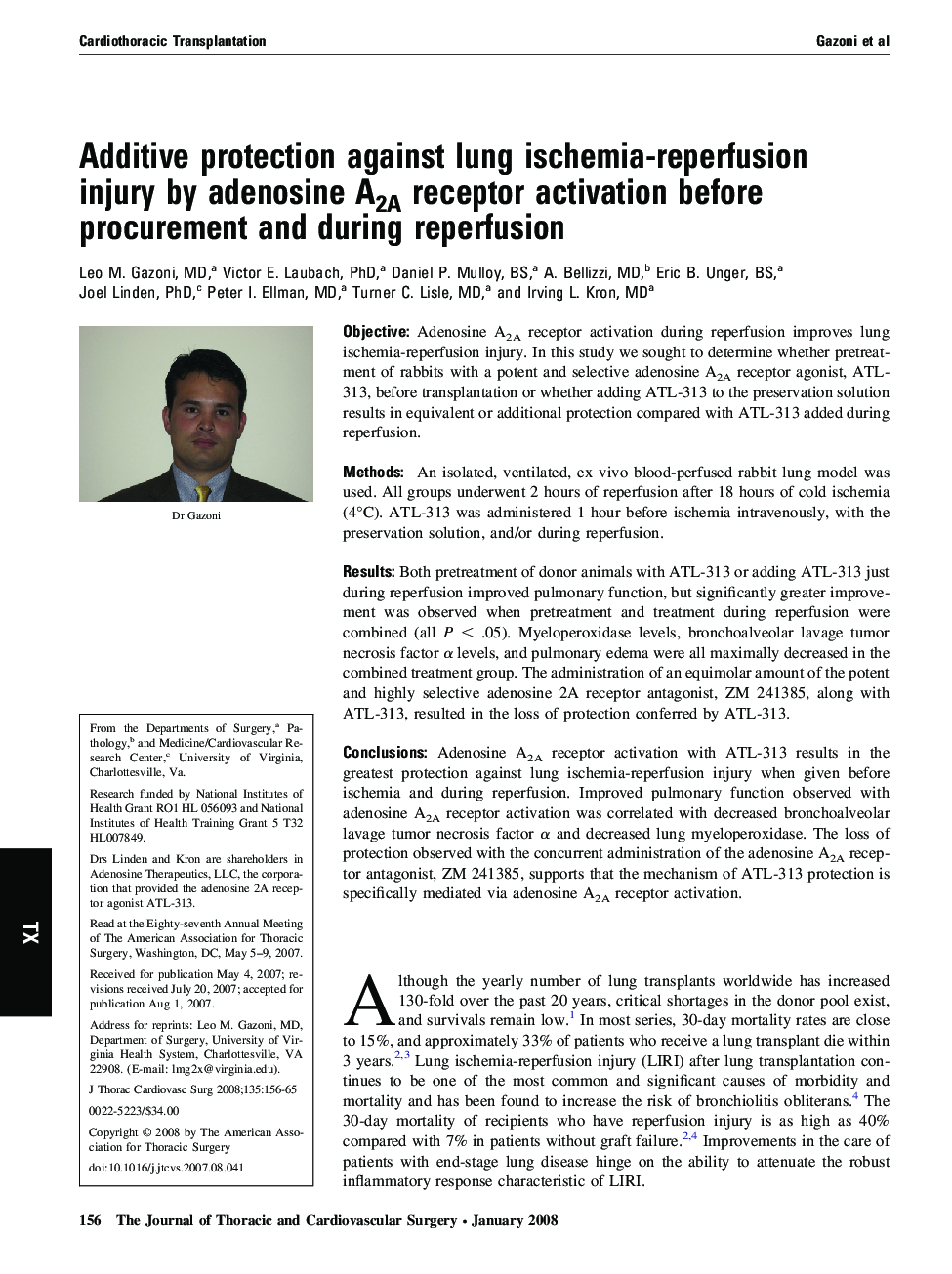| Article ID | Journal | Published Year | Pages | File Type |
|---|---|---|---|---|
| 2983933 | The Journal of Thoracic and Cardiovascular Surgery | 2008 | 10 Pages |
ObjectiveAdenosine A2A receptor activation during reperfusion improves lung ischemia-reperfusion injury. In this study we sought to determine whether pretreatment of rabbits with a potent and selective adenosine A2A receptor agonist, ATL-313, before transplantation or whether adding ATL-313 to the preservation solution results in equivalent or additional protection compared with ATL-313 added during reperfusion.MethodsAn isolated, ventilated, ex vivo blood-perfused rabbit lung model was used. All groups underwent 2 hours of reperfusion after 18 hours of cold ischemia (4°C). ATL-313 was administered 1 hour before ischemia intravenously, with the preservation solution, and/or during reperfusion.ResultsBoth pretreatment of donor animals with ATL-313 or adding ATL-313 just during reperfusion improved pulmonary function, but significantly greater improvement was observed when pretreatment and treatment during reperfusion were combined (all P < .05). Myeloperoxidase levels, bronchoalveolar lavage tumor necrosis factor α levels, and pulmonary edema were all maximally decreased in the combined treatment group. The administration of an equimolar amount of the potent and highly selective adenosine 2A receptor antagonist, ZM 241385, along with ATL-313, resulted in the loss of protection conferred by ATL-313.ConclusionsAdenosine A2A receptor activation with ATL-313 results in the greatest protection against lung ischemia-reperfusion injury when given before ischemia and during reperfusion. Improved pulmonary function observed with adenosine A2A receptor activation was correlated with decreased bronchoalveolar lavage tumor necrosis factor α and decreased lung myeloperoxidase. The loss of protection observed with the concurrent administration of the adenosine A2A receptor antagonist, ZM 241385, supports that the mechanism of ATL-313 protection is specifically mediated via adenosine A2A receptor activation.
